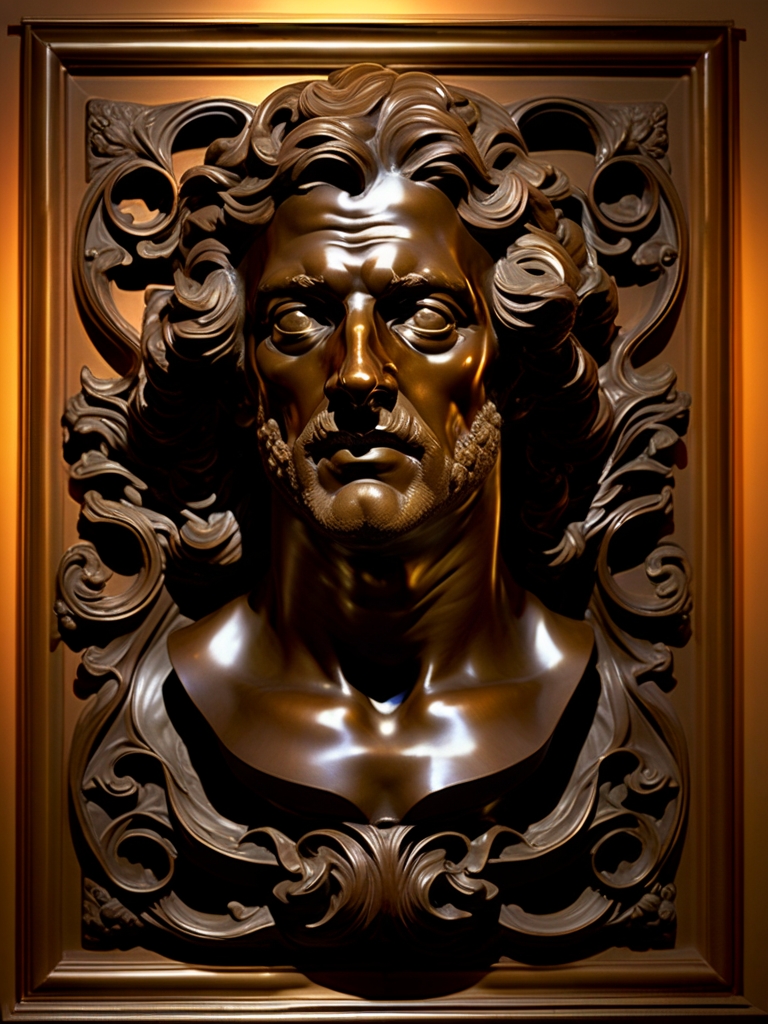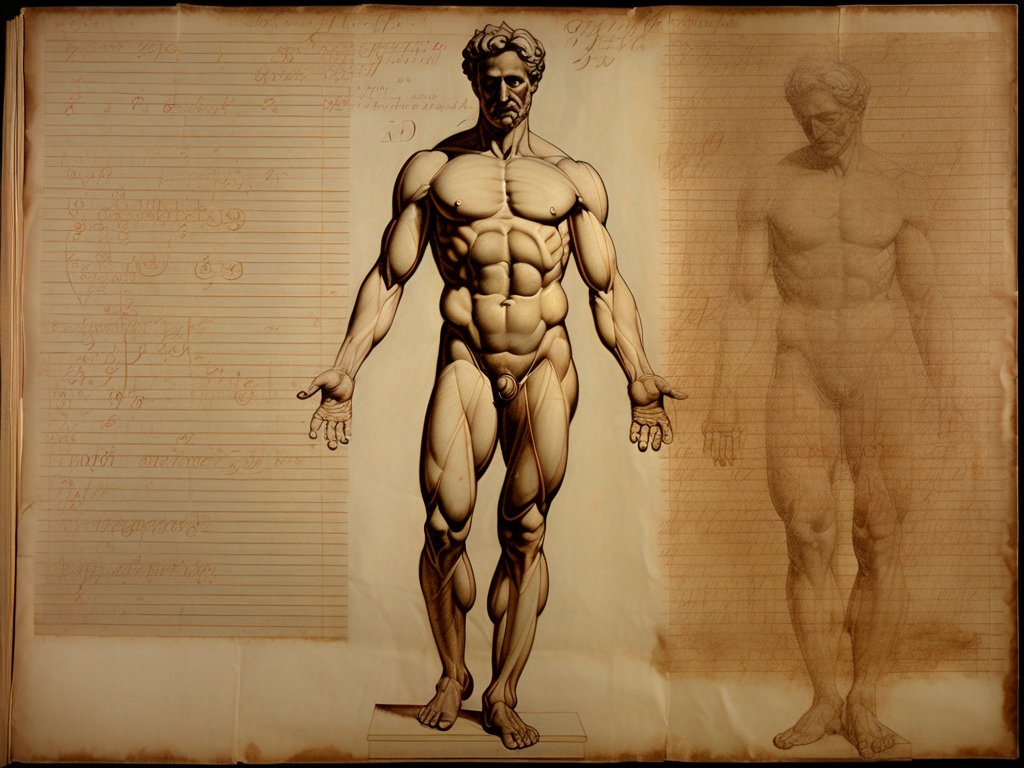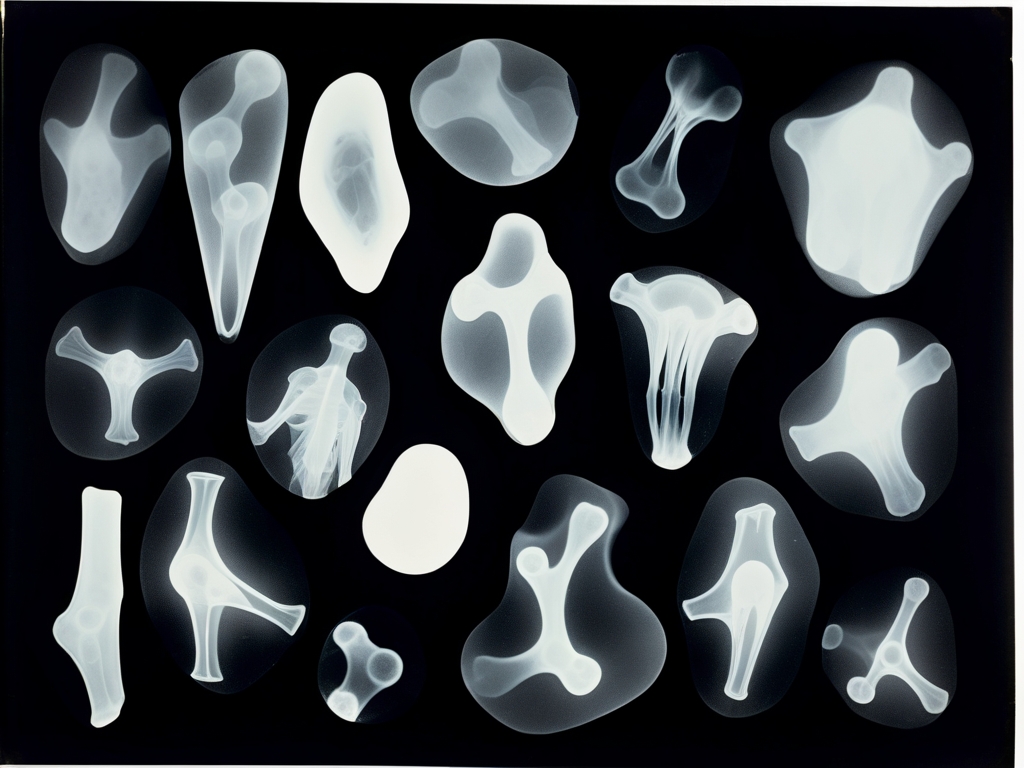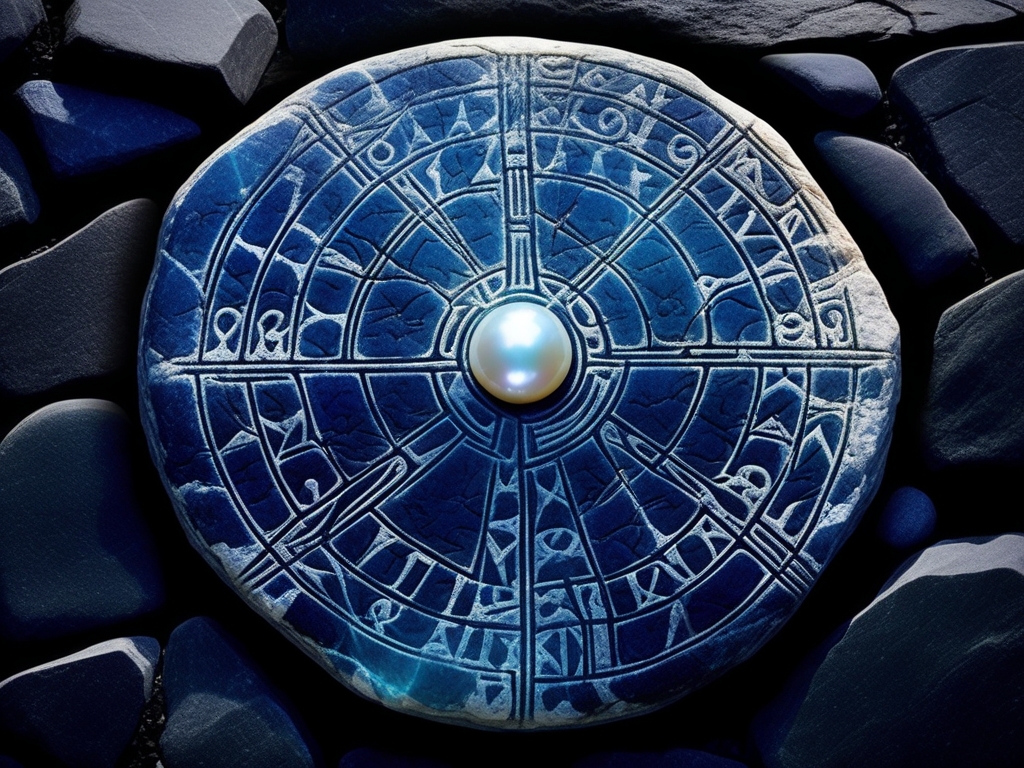The Vanishing Geometries

In the eastern wing of the Ravensfield Collection, beneath amber spotlights that weave intricate shadows like folded dimensions, stands a dark bronze portrait bust ensconced in lavish baroque ornamentation. The sculpture portrays a man whose sharply etched features seem to shift with every glance—the pronounced cheekbones and moustache-framing sideburns deepen into mysterious recesses, while eyes appear to track movement as if gazing through unseen planes beyond ordinary perception.
Though unsigned, the ornate frame and stylistic flourishes situate the piece firmly in late seventeenth-century craftsmanship. What unsettles scholars most is how parts of the bronze surface curve inward upon themselves, conjuring optical illusions that hint at a metal existing outside three-dimensional space. Visitors often emerge from prolonged study dazed, carrying an uncanny feeling they are observed in turn.
Historical records identify this enigmatic figure as Erasmus Vex, a minor Dutch cartographer devoted to mapping territories accessible only through theoretical constructs—what he called "the geography of absence." Corresponding with Jesuit mathematicians and Rosicrucian philosophers alike, Vex chronicled his efforts to chart realms reachable solely by exact geometric calculation.
In 1686, he commissioned this portrait from an anonymous sculptor with unusual instructions: capture not only his physical likeness but his “dimensional essence.” Witnesses recalled strange modeling sessions where Vex positioned himself amid complex arrays of mirrors and prisms—claiming these configurations revealed his true form across multiple planes simultaneously.
"The bronze remembers geometries that our reality has forgotten." Dr. Isadora Meridian, Dimensional Archaeologist
Centuries later, the sculptor’s workshop journal surfaced with eerie observations: “The subject occupies several positions at once. My bronze defies fixed form. Each casting yields differing proportions — as though capturing alternate versions of one man.”
By winter 1687, Vex constructed an elaborate crystalline chamber within his Amsterdam home arranged according to forbidden mathematical principles. Neighbors reported spectral lights bending impossibly through windows accompanied by sounds described as “the screaming of folded space.”
On Valentine's Day 1688, Vex’s landlord discovered the chamber vacant except for this finished bronze bust resting against its carved backdrop. The crystalline apparatus had vanished; only geometric scorch marks remained on the floor—markings painful to behold directly. Erasmus Vex himself was gone; some claimed fleeting glimpses of his silhouette flickering within the swirling depths of the metal.
Subsequent owners told tales familiar with odd phenomena: rooms seeming inexplicably larger when the bust stood close; shadows cast askew contrary to any light source; and a persistent sensation that Vex carried on charting impossible maps trapped somewhere inside this living alloy form.
Acquired for the Ravensfield Collection in 1923 through Dr. Cornelius Blackwood—the scholar later lost during an Antarctic expedition tracing rumored geometric anomalies—the sculpture remains a haunting enigma.
Modern visitors sense keenly that this portrait endures incomplete—that Erasmus Vex succeeded in existing across manifold dimensions but became imprisoned between them. Even now, subtle shifts ripple over its dark bronze surface—as if still seeking that final elusive geometric configuration needed for its subject to complete his impossible map.




